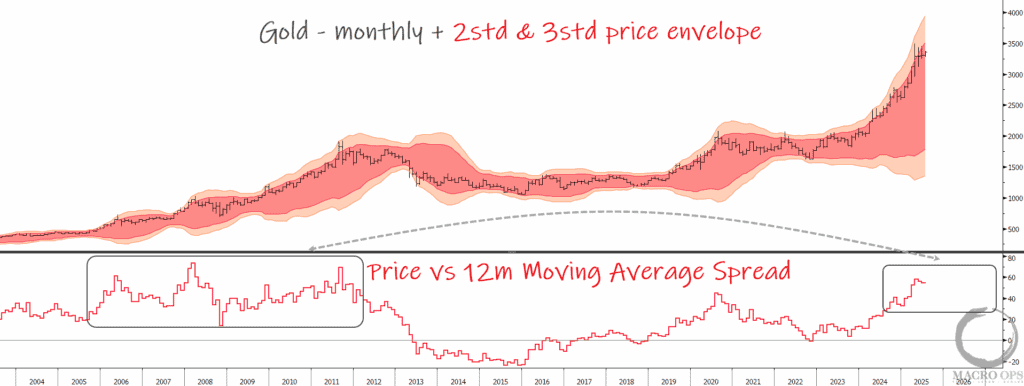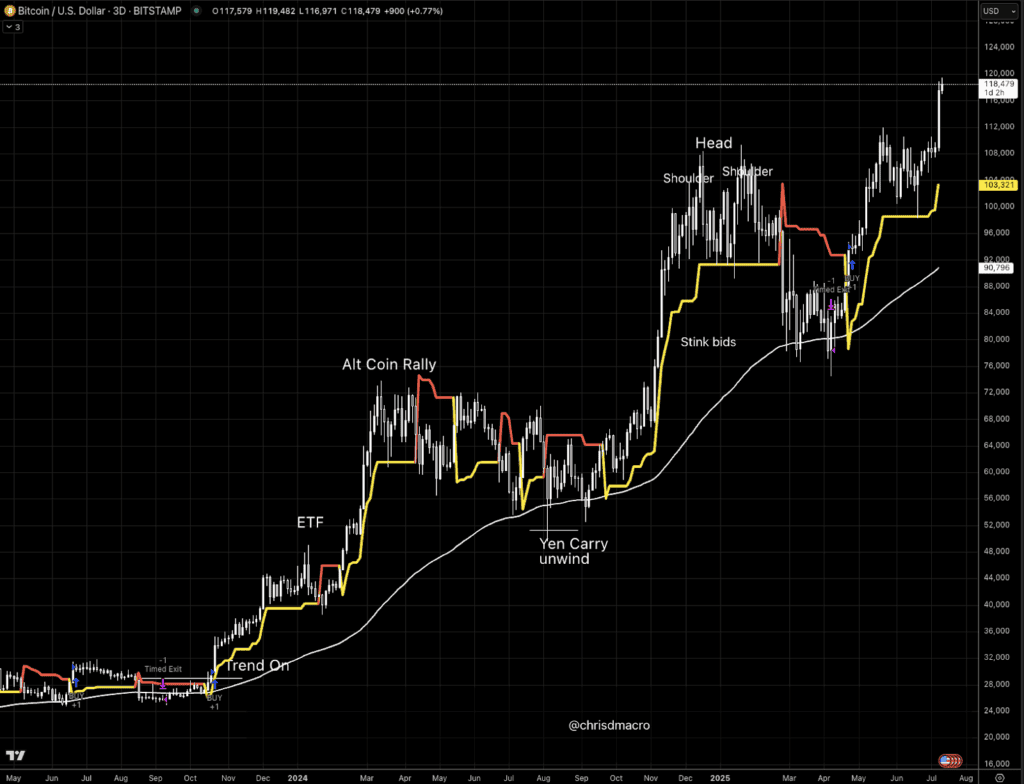Navigating the world of finance can often feel like traversing a maze, with twists and turns at every corner. Global macro investing is a compass that guides investors through the complexities of macroeconomic trends.
Global macro strategy is an investment approach that capitalizes on macroeconomic trends and geopolitical events by trading various financial instruments across multiple asset classes.
Global macro investing has evolved. In the early days, it was primarily focused on currency trading. However, as world economies become more interconnected, investors have expanded their focus to include other asset classes, such as equities, bonds, and commodities.
Understanding the strategies for effective global macro investing will enable you to unlock new opportunities and get significant returns in macro investing.
In this blog, we will explore the tactics for mastering global macro investing, providing you with valuable insights to enhance your investment decision-making process. We’ll cover:
- The tools and techniques of global macro analysis
- Global macro investing approaches
- And risks and challenges involved with global macro investing and how to manage these risks
Understanding Global Macroeconomics
To master a global macro strategy, you need to fully understand the fundamentals of global macroeconomics. Macroeconomic indicators, such as Gross Domestic Product (GDP), inflation, and unemployment rates, provide valuable insights into the health and performance of the global economy. Analyzing these indicators as well as global economic trends like emerging markets, aging populations, and technological advancements will enable you to identify patterns and potential opportunities or threats in the market.
Monetary and fiscal policies also play a crucial role in shaping global macroeconomic conditions. Central banks use tools like interest rates to control the money supply and influence economic activity, while governments use fiscal policy decisions on taxation and spending to impact demand and economic growth. Understanding these key concepts will enable you to make informed decisions and capitalize on opportunities in the global market.
Components of Global Macro Strategy
Mastering a global macro strategy involves understanding its key components to make well-informed investment decisions. Here are the essential elements of a successful global macro strategy:
- Identifying Macro Themes and Trends: Recognize overarching economic themes and trends, such as technological advancements or demographic shifts, that can impact markets and drive investment opportunities.
- Assessing Country and Regional Factors: Evaluate economic factors like GDP growth, inflation, and fiscal policies across countries and regions to identify potential risks and rewards.
- Evaluating Currency Dynamics: Analyze exchange rates, interest rates, and monetary policies to understand currency movements and their implications on global investments.
- Analyzing Commodity Markets: Examine supply and demand dynamics, as well as price trends in commodity markets, to anticipate how fluctuations may affect various asset classes and sectors.
- Considering Geopolitical Influences: Consider the potential impact of geopolitical events, such as elections, trade disputes, and military conflicts, on market sentiment and investment opportunities.
Find the Best Trading Podcasts for Global Macro Investors
Tools and Techniques for Global Macro Analysis
There are various tools for analyzing global financial markets, including:
- Fundamental analysis, which involves evaluating macroeconomic indicators, such as GDP, inflation, and interest rates, to gauge the overall health of economies and identify investment opportunities. It also includes assessing individual securities based on their financials and growth prospects.
- Technical analysis involves focusing on historical price patterns and trends to predict future market movements. Studying charts and employing various technical indicators can enable you to identify potential entry and exit points for trades.
- Sentiment analysis, which helps in determining the prevailing market sentiment by examining factors like investor confidence, news headlines, and social media chatter. This technique can provide insights into potential market shifts driven by emotions and psychological factors.
- Quantitative models such as using mathematical and statistical methods to analyze historical data and identify patterns in the financial market.
- Algorithmic trading, which involves automating the investment process to reduce human biases and emotions.
Risk Management in Global Macro Investing
Effective risk management is crucial for progressing with global macro investing. Techniques such as diversification, position sizing, and stop-loss orders can help mitigate losses and protect your portfolio from market volatility.
- Diversification involves spreading your investments across various asset classes, sectors, and regions. It’s like not putting all your eggs in one basket. By diversifying, you reduce the risk of a single investment negatively impacting your entire portfolio.
- Position sizing refers to the amount of money you invest in a particular asset. It’s a strategic approach to decide how many units of an asset to buy. The aim is to manage risk by not overexposing oneself to any single investment.
- Stop-loss orders are automatic orders that sell an asset when it reaches a certain price. The purpose is to limit potential losses on an investment. It’s like a safety net that automatically activates if the market moves against your predictions.
Approaches to Global Macro Investing
To succeed in global macro investing, it’s crucial to adopt the right approach that aligns with your investment goals and risk tolerance. Here are four popular approaches to global macro investing:
1. Top-Down Approach: Understanding the Big Picture
The top-down approach begins by analyzing macroeconomic factors, such as interest rates, GDP growth, and inflation, to identify potential investment opportunities. Investors using this approach focus on the broader economic landscape and its implications on industries, sectors, and asset classes before selecting individual securities.
For example, if you believe that the economy is going to experience a recession, you can decide to invest in defensive sectors such as utilities or consumer staples.
2. Bottom-Up Approach: Focusing on Individual Securities
In contrast, the bottom-up approach prioritizes the analysis of individual securities like stocks or bonds, based on their fundamentals, such as earnings, balance sheets, and growth prospects. This approach emphasizes the importance of selecting well-performing securities, regardless of the overall market conditions or macroeconomic trends.
An example involves investing in a company that shows strong earnings, growth prospects, and a solid balance sheet regardless of the overall market conditions or macroeconomic trends.
3. Tactical Asset Allocation
Tactical asset allocation involves adjusting the portfolio’s exposure to various asset classes, such as equities, fixed income, or commodities, in response to changing market conditions and macroeconomic factors. This approach aims to capitalize on short-term market inefficiencies and enhance returns while managing risk.
For example, if you believe that the stock market is overvalued and due for a correction, you can decide to reduce your exposure to equities and increase your exposure to fixed income or commodities.
READ NEXT: Why Dying Industries Can Make Great Investments
4. Systematic Trading Strategies
Systematic trading strategies use quantitative models and algorithms to identify patterns and trends in financial markets. These strategies often rely on historical data and statistical analysis to make investment decisions, reducing the influence of human emotions and biases. Examples of systematic trading strategies include trend-following, mean reversion, and arbitrage.
Successful Global Macro Strategies
Now, let’s examine the proven global macro investing strategies that can help you to easily navigate the complex global financial market.
- Long-Term Trend Following: This strategy involves identifying and capitalizing on established market trends, such as the rise of technology stocks or the decline in interest rates. Holding positions for extended periods enable you to benefit from these long-term trends.
- Event-Driven Investing: Event-driven strategies focus on exploiting opportunities arising from specific events, such as mergers, acquisitions, or political developments. The crucial task is to anticipate the market’s reaction to these events and position your portfolios to profit from the resulting price movements.
- Relative Value Strategy: this involves exploiting the price discrepancies between related financial instruments, such as stocks, bonds, or currencies. With this strategy, you can identify undervalued or overvalued assets and capitalize on the expected price convergence.
- Currency Carry Trades: Carry trades involve borrowing in a low-interest-rate currency and investing in a high-interest-rate currency. The goal is to profit from the interest rate differences while managing currency risk through hedging techniques.
Global Macro Hedge Funds
Global macro hedge funds use a combination of different global macro strategies to generate returns regardless of market conditions. They offer attractive risk-adjusted returns by investing in a diverse range of assets and employing sophisticated risk management techniques.
Case Studies: Examining Noteworthy Global Macro Trades
Let’s examine some successful trades in the past that can help you learn valuable lessons in global macro investing.
Trade 1: Profiting from Currency Market Volatility
In the early 1990s, George Soros famously bet against the British pound, anticipating that it was overvalued and would be forced to devalue. His timely short position earned him over $1 billion in profits, showcasing the potential rewards of correctly identifying currency mispricings.
Trade 2: Capitalizing on Commodity Price Fluctuations
During the 2000s commodity boom, many investors profited from the rapid increase in oil prices by taking long positions in oil futures or investing in energy companies. This example highlights the importance of understanding supply and demand dynamics and the impact of macroeconomic factors on commodity prices.
READ NEXT: How To Analyze The Oil Market
Trade 3: Leveraging Geopolitical Developments
In 2016, the Brexit referendum surprised financial markets, causing significant currency and equity market fluctuations. Astute global macro investors who anticipated the outcome and positioned their portfolios accordingly profited from the market’s reaction to this unexpected geopolitical event.
These case studies illustrate the potential gains from employing well-researched global macro strategies. It also shows the importance of staying informed about economic, political, and market developments to capitalize on opportunities as they arise.
Managing Risks and Challenges in Global Macro Investing
Global macro investing presents unique risks and challenges that you need to manage to achieve long-term success. Below are four important ways to minimize the effect of these risks:
- Understanding Liquidity Risks: Liquidity risk arises when an asset cannot be easily bought or sold without affecting its price. Investors should consider the liquidity of their investments and ensure they can adjust their positions without incurring significant losses.
- Navigating Political and Regulatory Risks: Political events and regulatory changes can significantly impact financial markets. Staying informed about geopolitical developments and adjusting your investment strategy accordingly can help mitigate these risks.
- Contending with Market Volatility: Market volatility is an inherent aspect of global macro investing. Employing risk management techniques, such as diversification and position sizing, can help protect your portfolio from sharp market fluctuations.
- Dealing with Behavioral Biases: Human emotions and biases can negatively influence investment decisions. Adopting a disciplined, systematic approach to investing can minimize the impact of these biases and improve decision-making.
As a recap, we delved into the importance of recognizing macroeconomic trends and geopolitical events, and how trading various financial instruments allows investors to capitalize on these forces. We also shared essential tips for implementing an effective global macro strategy, emphasizing the need for thorough research, disciplined risk management, and adaptability in the face of ever-changing market dynamics.
Global macro investing, much like navigating uncharted territory, requires a keen sense of direction and the ability to adapt to new challenges. As you journey into global macro investing, remember to stay vigilant, learn from experience, and refine your approach. Keeping these principles in mind will guide you toward financial growth and success in global macro investing.
Still feeling a bit overwhelmed? Don’t let market volatility deter you, we’re here to help! At Macro Ops, our team of dedicated researchers and analysts can guide you and provide you with comprehensive research and data-backed insights. Sign up today to smoothly navigate the complex world of macro investing.










